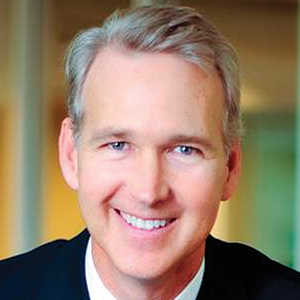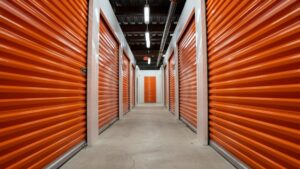Near the end of first-quarter 2021, many are still closely watching the multifamily-housing finance sector. With so many Americans yet to be vaccinated, the COVID-19 pandemic is far from over. But the rental-housing industry is growing more optimistic. As more Americans get vaccinated, a recovery in jobs is expected to follow. Renters and apartment owners who have struggled over the past year to make ends meet should begin to feel some relief.
One key area of multifamily real estate — mid-tier workforce housing — was widely recognized as an important part of the sector well before the pandemic hit U.S. shores. And today, after witnessing how crucial this type of housing is to so many Americans, these properties have come center stage. Of particular concern is the availability of supply, as well as the current options for financing their acquisition or renovation.
The mid-tier apartment sector plays a critical role in housing the nation’s workforce. Class B and C properties of 50 to 400 units are included in this stock and are found across the country, particularly in suburban locations near employment centers. These properties play an integral role in housing nurses, teachers, police officers and other essential workers.
Despite the pandemic that left millions out of work and struggling to pay rents, the outlook for workforce rental housing remains strong. This is the case because the nation already faced a severe shortage of workforce housing well before the pandemic struck in March 2020.
Renter demand for affordable-housing units remains high and the supply of new units is likely to be constrained for some time. The mid-tier apartment sector faces particular development challenges — even more so than lower-end apartments, which also has a critical shortage of units. Government subsidies, for example, support targeted, affordable multifamily developments for people who fall below the poverty line. These subsidies are generally unavailable in the mid-tier sector.
Meanwhile, much of the recent new development has occurred in the luxury-apartment market. Upper-end units command higher rents and tend to net a higher return on investment. Proposals to build market-rate, mid-tier apartments are often challenged to pencil out, given the high land and development costs in many cities. Thus, the supply in this mid-tier segment is falling significantly short of the demand.
Aside from the specific market disadvantages working against the supply of mid-tier apartments, housing developers face obstacles in the land-development review and approval processes with all types of projects, according to the National Association of Home Builders. Many regulatory barriers — primarily at the state and local levels — constrain the ability of the private market to supply well-located housing that cost-burdened households can afford.
The availability of financing for both the purchase and basic renovation of midrange multifamily assets is key to keeping them available. Today, however, this debt marketplace remains somewhat underserved.
Adding value
There are no simple solutions to these problems. The upshot, however, is that the supply-and-demand imbalance in the mid-tier apartment sector likely ensures that occupancy rates, rents and other key fundamentals for existing assets will remain stable even while in the grip of the pandemic.
With new supply consistently constrained over the past decade, existing properties also are strong investment opportunities. Given the need for workforce housing and the subdued pace of new developments, investors are actively buying and renovating existing mid-tier apartments.
“The demand and resilience you find in this type of apartment property is something you don’t see with some of the other types of apartments, and that is why it’s attractive to us as an investment,” said Nathan Kadisha, principal of K3 Holdings, an owner and investor in workforce apartments in Los Angeles. He also has similar previous experience in Texas, Arizona, Nevada and Florida.
Many workforce apartments were built 15 to 30 years ago and, once acquired, are due to be refreshed. A renovation usually involves adding modern enhancements but without the granite countertops, smart-home systems and other luxury touches found in upscale apartments.
The hot ticket for rehabbing these properties is green enhancement. Green rehab loans tend to get a pricing discount of five to 10 basis points. Green improvements tend to generate higher rents because millennials are willing to pay more for sustainable units, but they also can save on overall building expenses, which contribute to the return on investment.
Loan programs
The availability of financing for both the purchase and basic renovation of midrange multifamily assets is key to keeping them available. Today, however, this debt marketplace remains somewhat underserved.
Lenders have slowed transaction activity as they wait and watch virus-related developments, as well as local, state and federal mitigation efforts. Notably, as other lenders retreat, Fannie Mae and Freddie Mac have become increasingly important debt sources for owners and investors.
Through its Optigo loan program and its approved lenders, Freddie Mac offers conventional multifamily mortgages for mid-tier properties. Typical loan transactions fall into the $5 million to $30 million range but are not limited by size. Qualified borrowers may access these loans to acquire, refinance or rehabilitate their properties, and these debt solutions include fixed-rate, floating-rate and hybrid options.
The conventional fixed-rate loan product provides fast and flexible financing for a wide range of apartment properties, offering five- to 10-year terms without recourse, except for standard carve-out provisions. The hybrid product, otherwise known as a float-to-fixed-rate loan, is ideal for multifamily assets in need of light repositioning, although property enhancements are not required. Payments made during the first two years include floating rates, which become fixed during the following seven years.
The floating-rate loan offering is well-suited for borrowers wanting to take advantage of lower, shorter-term rates with prepayment flexibility. This nonrecourse loan, excepting standard carve-out provisions, is offered in terms of five, seven and 10 years.
The demand for conventional loans is particularly high today and Freddie Mac’s debt options are quite valuable to borrowers. This area of multifamily finance remains underserved, particularly as the COVID-19 health crisis continues to wreak havoc on commercial real estate and some lenders are choosing to wait things out.
There’s no doubt that commercial real estate is experiencing a hangover from 2020. Yet amid the COVID-19 pandemic, mid-tier multifamily assets remain a unique case.
Moving forward
There’s no doubt that commercial real estate is experiencing a hangover from 2020. Yet amid the COVID-19 pandemic, mid-tier multifamily assets remain a unique case. In the past year, so many people were confined to their rentals. Working, home schooling and even fitness routines became commonplace activities in apartment spaces.
Many renters, however, remain unemployed or underemployed in 2021, and some are still struggling to stay current on their rents. With some eviction moratoriums extended, such as the comprehensive anti-eviction law passed in the state of New York in December 2020, this has undoubtedly placed pressure on apartment owners over the past several months.
There is a light at the end of the tunnel, however, for multifamily real estate. This is especially true for properties categorized as workforce housing. A 2020 Harvard University report on the state of the nation’s housing indicates that federal support — including enhanced unemployment benefits, stimulus payments, and funding for state and local relief efforts — managed to keep many renters afloat.
Despite ongoing concerns about renters making payments, the delinquency rate for multifamily mortgages has not risen appreciably. In fact, a Mortgage Bankers Association survey found that only 1.7% of loans for professionally managed multifamily properties were in any stage of delinquency as of December 2020.
Additionally, as vaccine distribution continues — especially beyond the highest-priority category of essential workers — the economy is likely to improve as workplaces open, jobs recover and schools return to in-person learning. These widely expected developments should start to alleviate the pressure on apartment owners as formerly struggling tenants are better able to make their lease payments.
Expect the recovery in workforce apartments, as well as across the multifamily sector at large, to begin taking shape in second-quarter 2021. Simultaneously, transaction activity also is likely to pick up in the second quarter as risk starts to gradually decline. The third and fourth quarters of this year should deliver an even better outlook with an expected influx in deployed debt — provided everything moves forward as planned with vaccine distribution and the U.S. begins to recover from the distress caused by the pandemic. ●
Author
-

Pat Jackson is CEO of Sabal Capital Partners LLC, a lender specializing in the small-balance space. Sabal’s proprietary SNAP lending platform enables automation and efficiency in the lending process, two key drivers of the company’s continued high-volume record of closings.
View all posts






